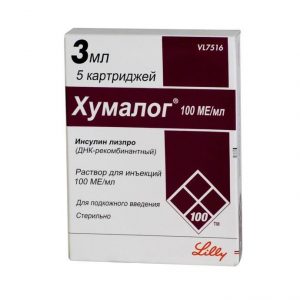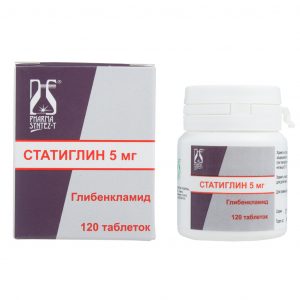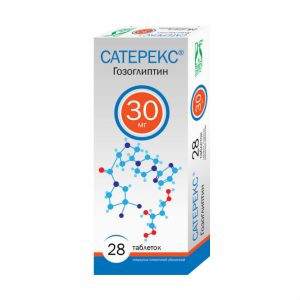Description
Pharmacological action
Hypoglycemic agent of the biguanide group for oral administration.
Indications
Type 2 diabetes mellitus, especially in patients with obesity, with ineffective diet therapy and physical activity:
in adults as monotherapy or in combination with other oral hypoglycemic agents or with
insulin in children from 10 years of age as monotherapy or in combination with insulin.
Prevention of type 2 diabetes in patients with prediabetes with additional risk factors for developing type 2 diabetes, in which lifestyle changes did not allow adequate glycemic control to be achieved.
Contraindications
Hypersensitivity to metformin or any adjuvant
diabetic ketoacidosis, diabetic precoma, coma
renal failure or impaired renal function (creatinine clearance less than 45 ml / min) acute, srdlk kidney function: dehydration (with diarrhea, vomiting), severe infectious diseases, shock
clinically pronounced manifestations of acute or chronic diseases that can lead to tissue development oh hypoxia (including 4 including acute heart failure, chronic heart failure, unstable hemodynamics, respiratory failure, acute myocardial infarction)
extensive surgery and trauma, when insulin therapy is indicated (see the Special Instructions section)
liver failure, impaired liver function
chronic alcoholism, acute alcohol poisoning
pregnancy
lactic acidosis (including history)
use during less than 48 hours before and within 48 hours after conducting radioisotope or x-ray studies with the introduction of iodine-containing contrast medium (see section Interaction with other drugs )
adherence to a low-calorie diet (less than 1000 kka / Day).
Composition
1 tablet contains:
Active ingredient: metformin hydrochloride 850 mg.
Excipients: hypromellose 8.5 mg povidone K90 (collidone 90F) 34.0 mg sodium stearyl fumarate 8.5 mg.
Water-soluble film film: hypromellose 11.9 mg mg polyethylene glycol 6000 (macrogol 6000) 1.53 mg polysorbate 80 (tween 80) 0.17 mg titanium dioxide 3.4 mg.
Side effects
The frequency of side effects of the drug is estimated as follows: very often ( 1/10) often ( 1/100, <1/10) infrequently ( 1/1000, <1/100) rarely ( 1 / 10000, <1/1000) is very rare (<1/10000). Side effects are presented in decreasing order of importance. From the side of metabolism and nutrition: very rarely – lactic acidosis (see. “Special instructions”). With prolonged use of metformin, a decrease in absorption of vitamin B12 may be observed. If megaloblastic anemia is detected, the possibility of such an etiology must be considered. From the nervous system: often – a violation of taste. From the gastrointestinal tract: very often – nausea, vomiting, diarrhea, abdominal pain, lack of appetite. Most often they occur in the initial period of treatment and in most cases pass spontaneously. To prevent symptoms, it is recommended that you take metformin 2 or 3 times a day during or after meals. Slow dose increases can improve gastrointestinal tolerance. From the skin and subcutaneous tissue: very rarely – skin reactions such as erythema, pruritus, rash. Violations of the liver and biliary tract: very rarely – a violation of the liver function or hepatitis after the abolition of metformin, these adverse events completely disappear. Published data, post-marketing data, and controlled clinical trials in a limited child population in the 10-16 age group show that side effects are similar in nature and severity to adult patients. Storage conditions In the dark place at a temperature of no higher than 25 ° C. Keep out of the reach of children. Expiration 3 years. Do not use after expiration date. active substance Metformin Terms of delivery from pharmacies Prescription dosage form tablets




